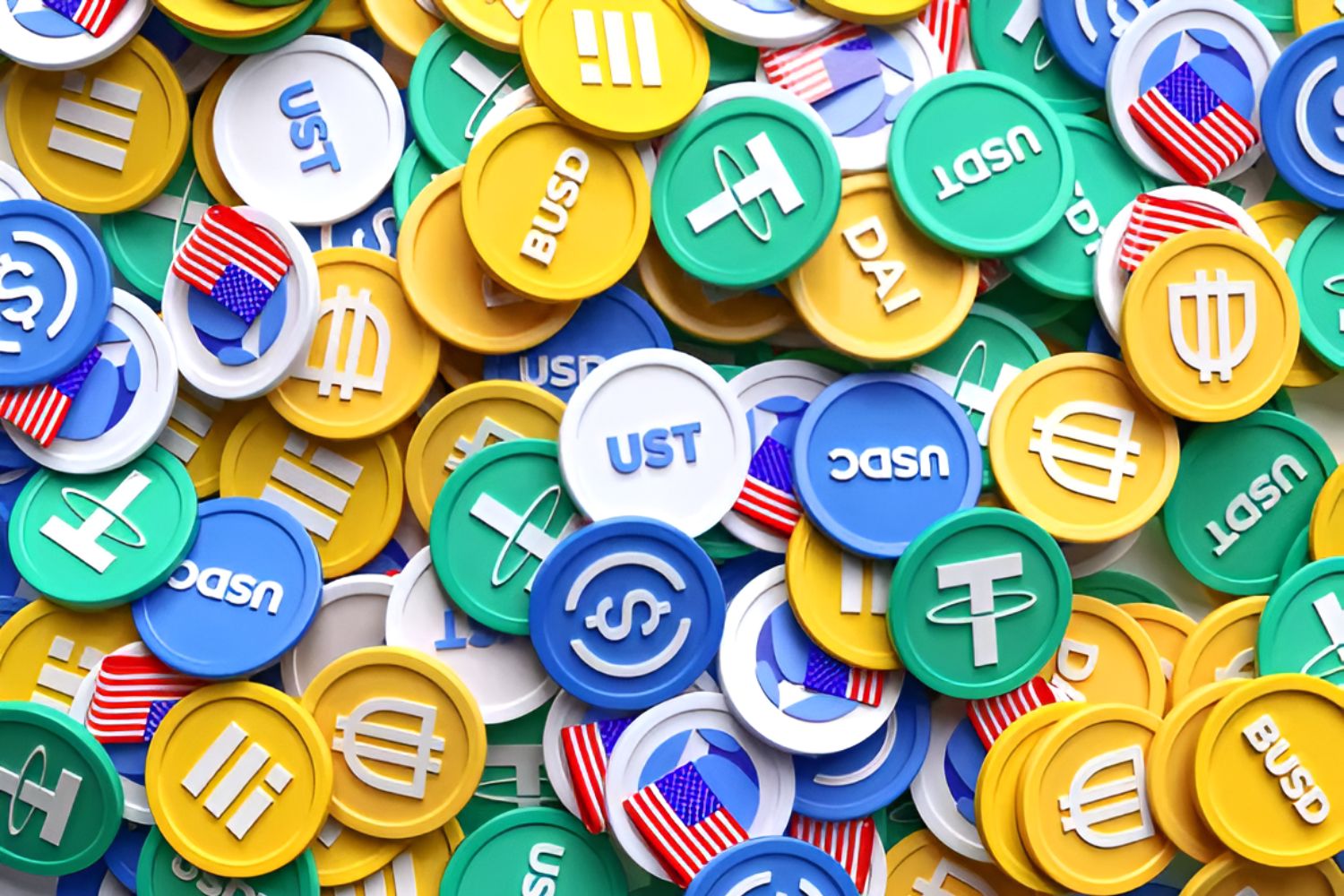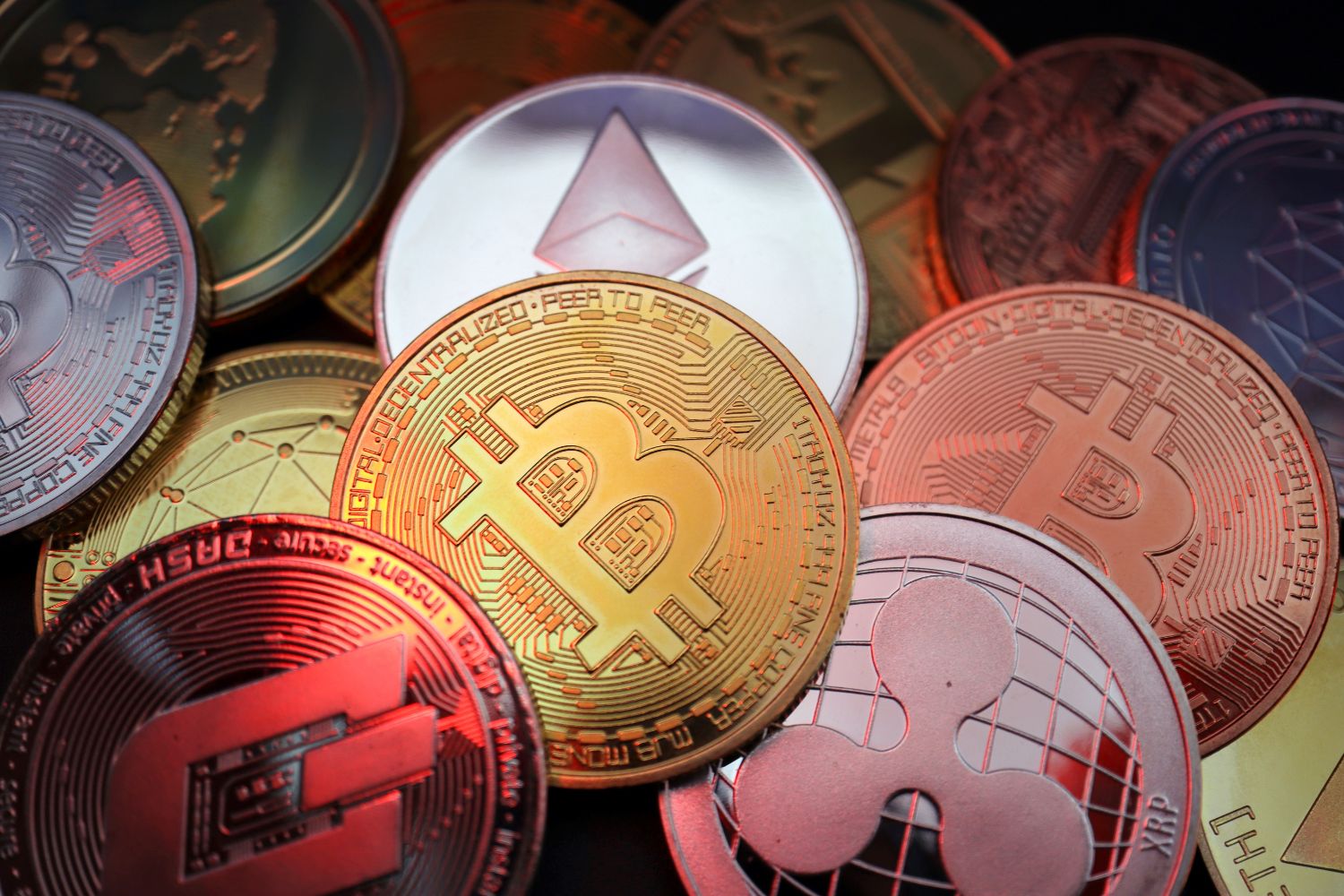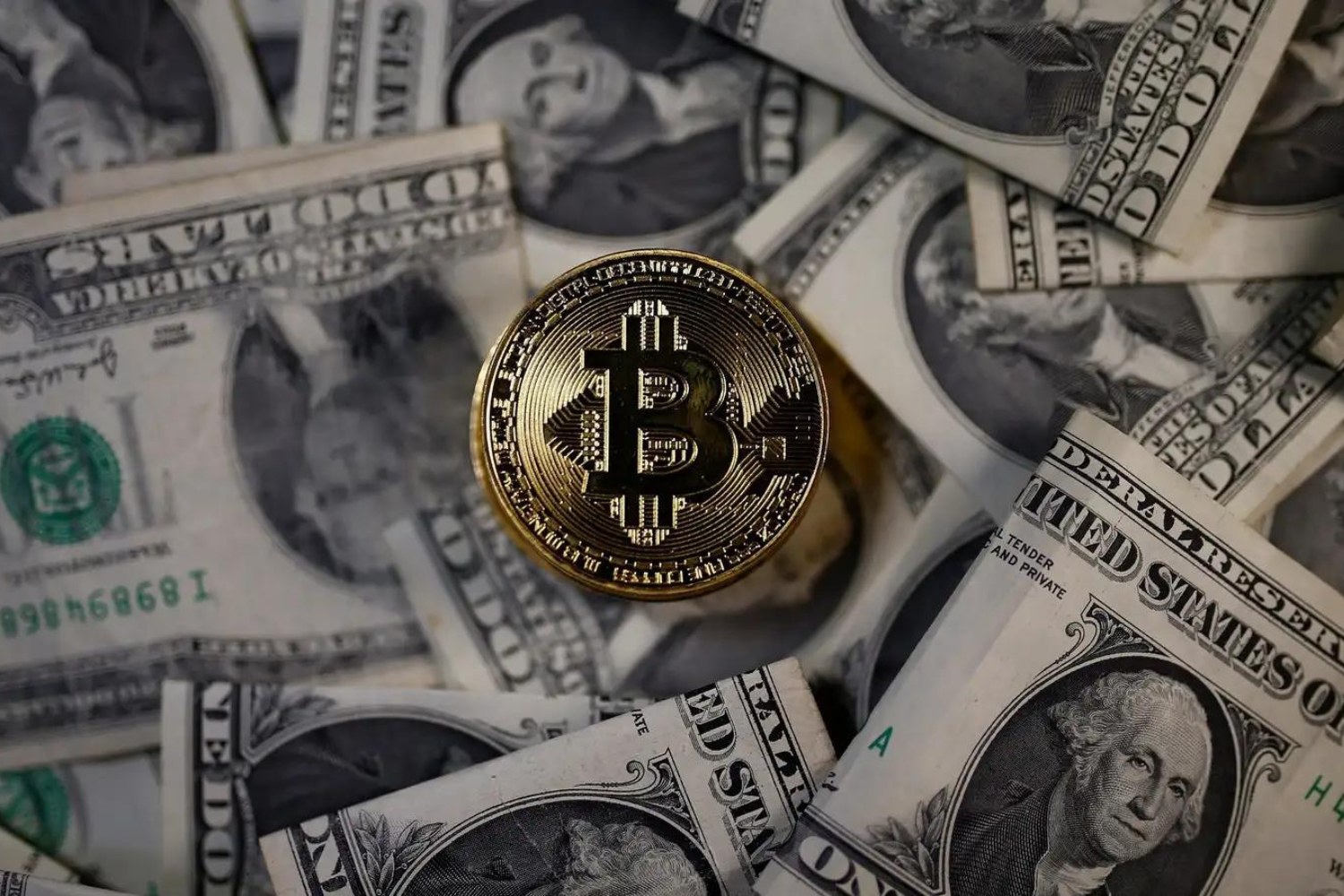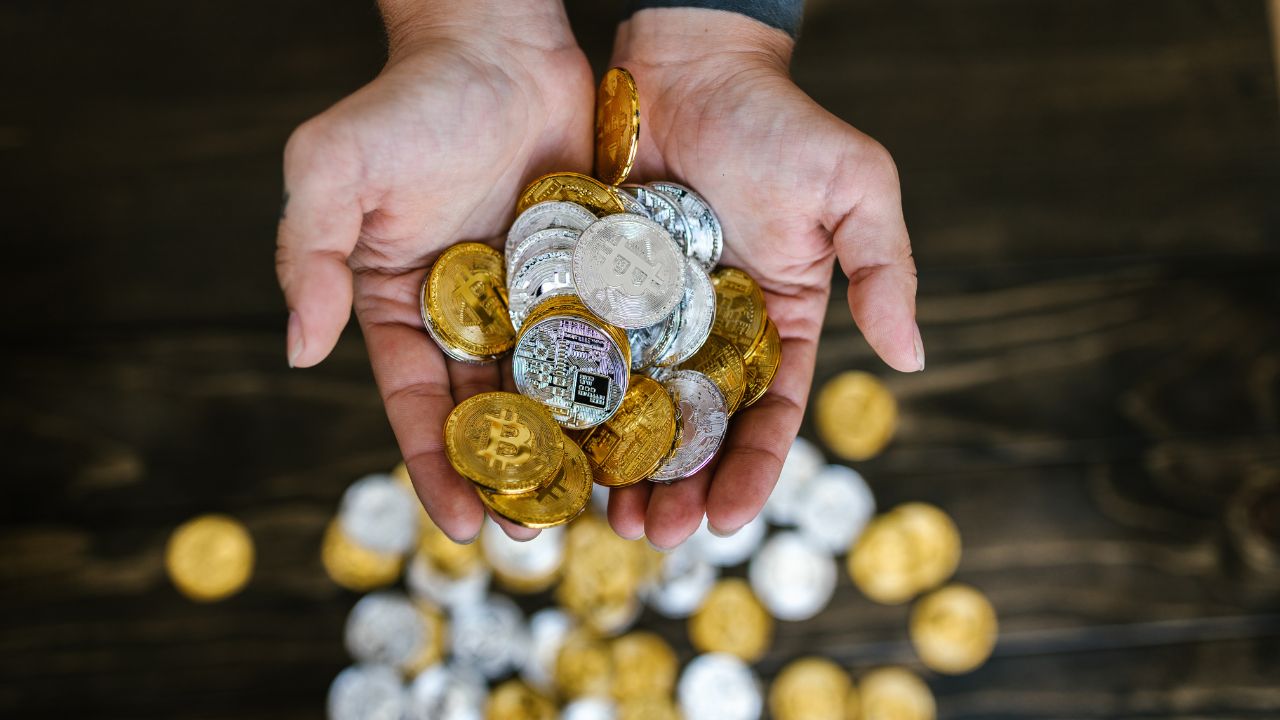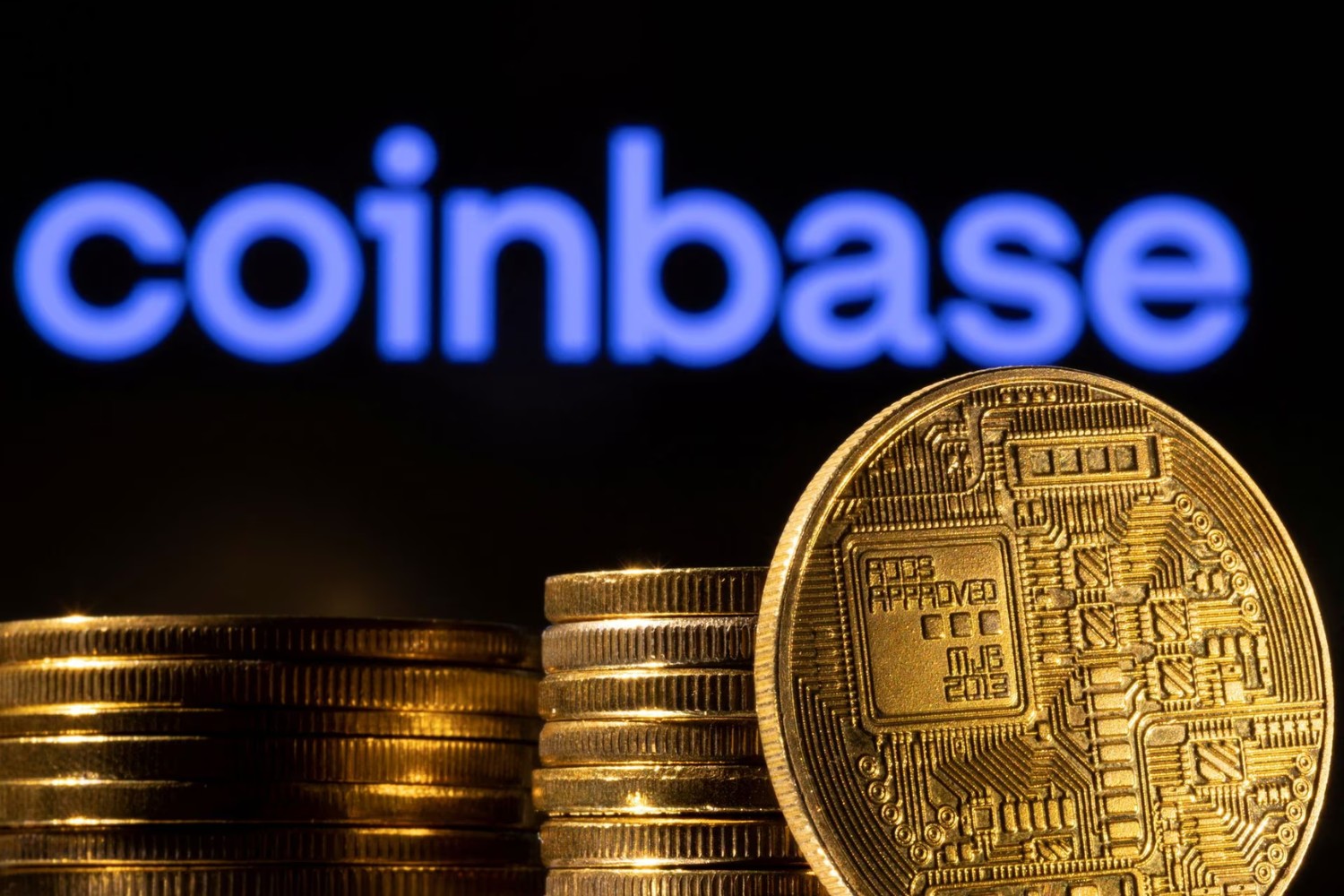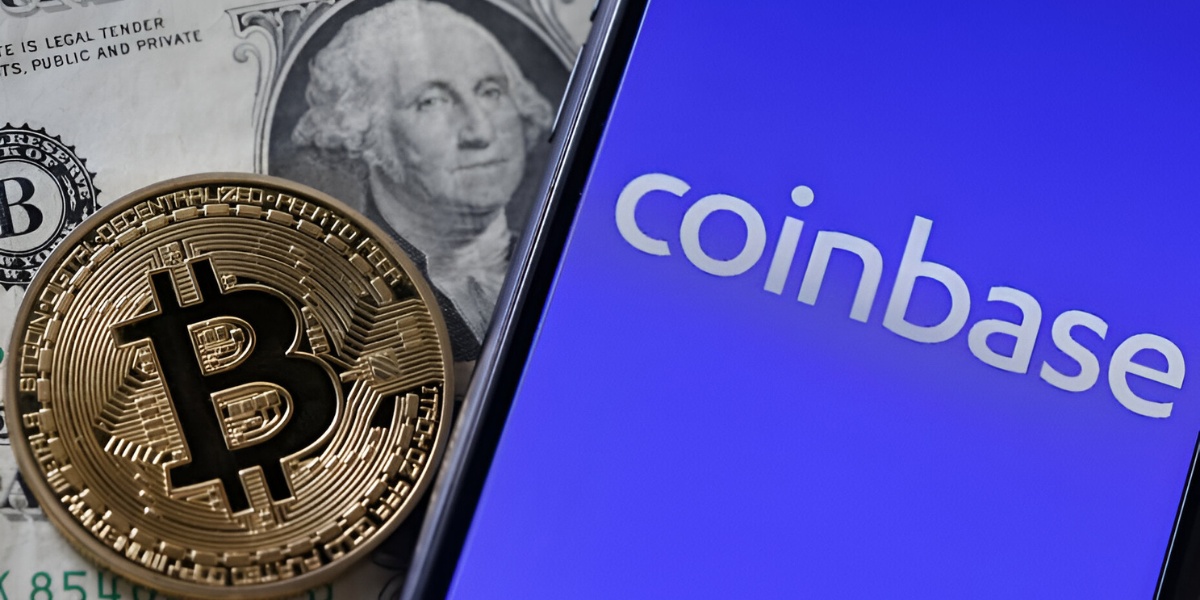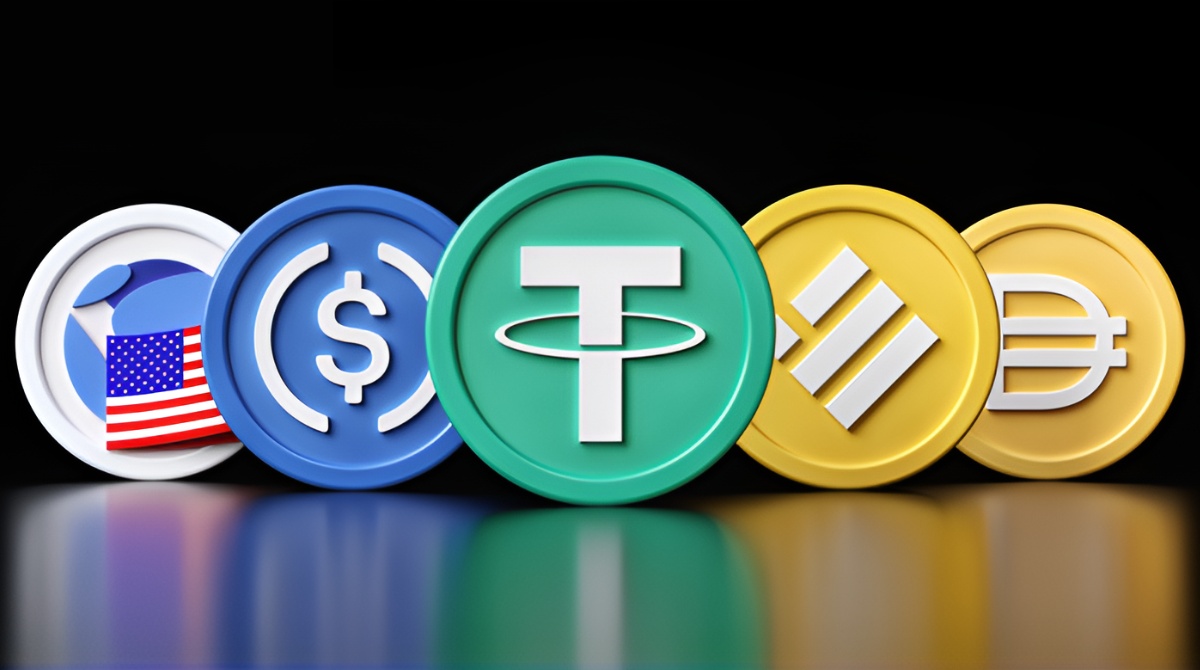Introduction
Stablecoins have become an increasingly popular form of digital currency in the ever-evolving world of cryptocurrencies. Unlike traditional cryptocurrencies like Bitcoin and Ethereum, which experience significant price volatility, stablecoins aim to maintain a stable value, typically pegged to a fiat currency like the US dollar.
Stability is a crucial factor in the adoption and use of digital currencies. The fluctuating prices of popular cryptocurrencies have made them less reliable as a medium of exchange and store of value. Stablecoins offer a solution to this problem by providing a more predictable and less volatile alternative.
Stablecoins come in various forms, offering different mechanisms for maintaining stability. Some stablecoins are collateralized, backed by reserves of fiat currencies or other assets, while others are algorithmically controlled, using smart contracts to regulate the supply based on demand. The goal is to ensure that the stablecoin price remains close to the pegged value, offering users a convenient and reliable digital currency experience.
There are several advantages to using stablecoins. Firstly, they allow for quick and seamless transactions, as the transfer of stablecoins can be done on decentralized platforms without the need for traditional intermediaries. Secondly, stablecoins can provide a way for cryptocurrency traders to hedge against market volatility, as they can easily convert their holdings into a more stable form of digital currency. Additionally, stablecoins have the potential to be used for remittances and cross-border transactions, as they can eliminate the need for costly foreign exchange conversions.
When considering a stablecoin for use, there are several factors to take into account. These include the stability mechanism employed, the transparency of the project, the credibility and trustworthiness of the issuing entity, and the level of decentralization. It is important to assess these factors to ensure that the selected stablecoin meets the desired level of safety and reliability.
In this article, we will explore what makes a stablecoin safe, discussing the various safety features that can be employed. We will also take a closer look at some popular stablecoins in the market today and examine their safety measures. By gaining a better understanding of stablecoins and their safety attributes, users can make informed decisions when choosing the safest stablecoin for their needs.
What is a stablecoin?
A stablecoin is a type of digital currency that is designed to maintain a stable value, typically pegged to a fiat currency like the US dollar. While cryptocurrencies like Bitcoin and Ethereum are known for their price volatility, stablecoins aim to provide a more predictable and reliable form of digital currency.
There are different types of stablecoins, each with its own mechanism for maintaining stability. One common type is the collateralized stablecoin, which is backed by reserves of assets such as fiat currency, precious metals, or other cryptocurrencies. The reserves act as a guarantee for the stablecoin, ensuring that it maintains its value.
Another type of stablecoin is the algorithmic stablecoin, which relies on smart contracts and algorithms to regulate the supply of the stablecoin based on market demand. These stablecoins adjust their supply dynamically in response to price movements to keep the value stable.
Stablecoins offer several advantages over traditional cryptocurrencies. Firstly, their stable value makes them more suitable for everyday transactions. Users can confidently use stablecoins for purchases without worrying about sudden price fluctuations. Additionally, stablecoins provide a reliable store of value, as users can hold them without the fear of losing significant value overnight.
Stablecoins also have the potential to facilitate cross-border transactions and remittances. By eliminating the need for costly foreign exchange conversions, stablecoins can streamline international transactions and reduce transaction costs.
Overall, stablecoins aim to bridge the gap between the traditional financial system and the world of cryptocurrencies by combining the benefits of both. They offer a more stable and reliable form of digital currency while still leveraging the advantages of decentralized blockchain technology.
It is important to note that while stablecoins aim to maintain stability, they may not always be 100% immune to volatility. External factors such as sudden market shocks or lack of liquidity can still impact the stability of stablecoins. However, the goal is to minimize price volatility and provide users with a more predictable and stable digital currency experience.
Types of stablecoins
Stablecoins come in various forms, each with its own mechanism for maintaining stability. Here are some of the common types of stablecoins:
- Collateralized stablecoins: These stablecoins are backed by reserves of assets, such as fiat currency, precious metals, or other cryptocurrencies. The reserves provide a guarantee for the value of the stablecoin. Examples of collateralized stablecoins include Tether (USDT), which claims to be backed by an equivalent amount of US dollars, and gold-backed stablecoins like PAX Gold (PAXG).
- Algorithmic stablecoins: Unlike collateralized stablecoins, algorithmic stablecoins do not rely on reserves of assets. Instead, they use smart contracts and algorithms to regulate the supply of stablecoins based on market demand. When the price of the stablecoin is above its target value, the supply is increased, and when the price is below the target, the supply is reduced. Examples of algorithmic stablecoins include Dai (DAI), which is pegged to the US dollar and uses a system of collateralized debt positions to maintain stability.
- Hybrid stablecoins: Hybrid stablecoins combine the features of collateralized and algorithmic stablecoins. They may use a combination of reserves and algorithms to maintain stability. These stablecoins aim to leverage the benefits of both approaches. Ampleforth (AMPL) is an example of a hybrid stablecoin that adjusts its supply based on price elasticities, aiming for stability in terms of purchasing power rather than a specific asset value.
- Fiat-collateralized stablecoins: These stablecoins are backed by fiat currency reserves, typically held in a bank account. The issuing entity maintains a 1:1 ratio of stablecoin to fiat currency. Examples of fiat-collateralized stablecoins include USD Coin (USDC) and TrueUSD (TUSD).
- Commodity-collateralized stablecoins: Some stablecoins are backed by tangible assets like precious metals or other commodities. These stablecoins derive their stability from the underlying value of the commodities. For example, Digix Gold (DGX) is a stablecoin backed by physical gold, and its value represents a specified weight of gold.
Each type of stablecoin has its own advantages and limitations. Collateralized stablecoins offer a direct link to the value of the underlying assets but may be susceptible to regulatory risks or insufficient reserves. Algorithmic stablecoins provide a decentralized approach to stability but can be more complex to understand and may face challenges in maintaining the peg during extreme market conditions. Hybrid stablecoins attempt to combine the best features of both approaches but are still relatively new and less commonly used.
It is important to evaluate the mechanisms and underlying assets of a stablecoin before deciding which type to use. Understanding the advantages and risks associated with each type of stablecoin can help users choose the most suitable option for their needs.
Advantages of using stablecoins
Stablecoins offer several advantages over traditional cryptocurrencies and fiat currencies. Here are some of the key advantages of using stablecoins:
- Stability: As the name suggests, stablecoins are designed to maintain a stable value. This stability makes them a more reliable medium of exchange and store of value compared to volatile cryptocurrencies like Bitcoin and Ethereum. Stablecoins provide users with confidence that the value of their digital currency holdings will not experience sudden and significant fluctuations.
- Seamless transactions: Stablecoins facilitate quick and seamless transactions, especially in the digital realm. The use of stablecoins eliminates the need for intermediaries, such as traditional banks, which can result in faster transaction processing times and lower transaction fees. Users can send and receive stablecoins anywhere in the world without the hassle of going through traditional financial systems.
- Hedging against volatility: For cryptocurrency traders and investors, stablecoins offer a convenient way to hedge against market volatility. When the price of cryptocurrencies is experiencing significant fluctuations, users can easily convert their holdings into stablecoins to protect their value. This allows traders to temporarily park their funds in a more stable form, reducing the risk of losses during turbulent market conditions.
- Accessibility: Stablecoins provide accessibility to the world of cryptocurrencies for individuals who may be hesitant to invest in highly volatile digital assets. The stable value of stablecoins makes them more approachable and less intimidating for newcomers to the cryptocurrency space.
- Reduced transaction costs: Stablecoins can significantly reduce transaction costs, particularly for cross-border transactions. The use of stablecoins can eliminate the need for costly currency conversions and intermediaries typically involved in international money transfers. This can make remittances and cross-border payments faster, cheaper, and more efficient.
- Privacy and security: Similar to cryptocurrencies, stablecoins offer privacy and security features inherent in blockchain technology. Transactions conducted with stablecoins can be pseudonymous, protecting the identity of users. Furthermore, the decentralized nature of many stablecoins ensures that transactions are secured by the blockchain network, reducing the risk of fraud or tampering.
Overall, stablecoins provide a more stable, efficient, and accessible form of digital currency. Their unique features make them suitable for various use cases, including everyday transactions, trading, and remittances. By combining the benefits of cryptocurrencies and traditional financial systems, stablecoins offer a flexible and reliable alternative for users seeking a more predictable and seamless digital currency experience.
Factors to consider when choosing a stablecoin
When selecting a stablecoin for use, there are several important factors to consider. These factors can help users determine the stability, reliability, and suitability of a stablecoin for their specific needs. Here are some key factors to take into account:
- Stability mechanism: Understand the stability mechanism employed by the stablecoin. Is it collateralized, algorithmic, or a hybrid? Evaluate the effectiveness of the mechanism in maintaining stability and consider the potential risks associated with it.
- Transparency: Examine the level of transparency provided by the stablecoin project. Look for information on the reserves, audits, and issuance process. Transparent stablecoin projects will provide clear and regular updates on their holdings and operations, contributing to trust and credibility.
- Collateralization assets: If the stablecoin is collateralized, consider the quality and type of assets backing the stablecoin. Assess the credibility and stability of the underlying assets, as they play a significant role in maintaining the value and security of the stablecoin.
- Decentralization: Evaluate the level of decentralization of the stablecoin. A more decentralized stablecoin may offer increased transparency, immutability, and resilience to censorship. However, it’s important to weigh the benefits of decentralization against potential challenges in maintaining stability and scalability.
- Issuing entity: Research the credibility and reputation of the issuing entity behind the stablecoin. Consider factors such as their regulatory compliance, track record in the industry, and the team’s expertise. A reliable and trustworthy issuing entity is crucial for the stability and security of the stablecoin.
- Market liquidity: Assess the liquidity of the stablecoin in the cryptocurrency market. A well-liquidated stablecoin ensures that users can easily buy, sell, and trade it without significant price slippage. High liquidity also contributes to the stability of the stablecoin’s value.
- Adoption and usage: Consider the adoption and usage of the stablecoin in various platforms, such as digital wallets and exchanges. A widely adopted stablecoin is more likely to have a vibrant ecosystem and higher utility value.
- Regulatory compliance: Verify whether the stablecoin complies with relevant regulatory requirements in the jurisdictions in which it operates. Compliance with regulations ensures legal certainty and may contribute to the long-term stability and sustainability of the stablecoin.
By considering these factors, users can make more informed decisions when choosing a stablecoin for their specific use case. It is important to align the chosen stablecoin with individual preferences, risk tolerance, and the desired level of stability and security.
The importance of stability in a stablecoin
Stability is a critical attribute of a stablecoin and plays a crucial role in its adoption, functionality, and overall utility. The primary purpose of a stablecoin is to provide a digital currency with a stable value, typically pegged to a fiat currency like the US dollar. Here are some reasons why stability is important in a stablecoin:
Medium of exchange: Stability is essential for a stablecoin to fulfill its role as a medium of exchange effectively. Merchants and service providers require a reliable currency for conducting transactions. By maintaining a stable value, stablecoins enable seamless and predictable payments, enhancing their usability as a medium of exchange in day-to-day commerce.
Store of value: Stability is crucial for a stablecoin to serve as a reliable store of value. Users want to preserve the purchasing power of their digital assets over time. By providing stability, stablecoins offer a viable alternative to traditional fiat currencies, allowing users to hold and save their funds without the risk of losing value due to volatility.
Hedging against volatility: Stability in a stablecoin provides a hedge against the volatility commonly associated with other cryptocurrencies. Traders and investors can temporarily convert their holdings into stablecoins during times of market uncertainty, thus mitigating the risk of value erosion. Stablecoins offer a secure and predictable refuge for safeguarding wealth during market downturns.
Cross-border transactions: Stability is of utmost importance in facilitating cross-border transactions. Stablecoins provide a convenient and cost-effective alternative to traditional remittance systems, which often incur hefty fees and suffer from slow processing times. The stability of stablecoins ensures that the value of funds remains consistent throughout international transfers, eliminating the need for costly currency conversions.
Financial access and inclusion: Stablecoins contribute to financial access and inclusion by providing a stable and easily accessible digital currency. In regions with high levels of inflation or limited access to traditional banking systems, stablecoins can offer a more reliable and convenient way to engage in financial transactions. People who lack access to stable local currencies can utilize stablecoins as a secure and stable means of exchange and storage of value.
Trust and confidence: Stability enhances trust and confidence in a stablecoin. Users are more likely to adopt and utilize a stablecoin that has a proven track record of maintaining its peg and stability. Transparency in operations, regular audits, and a credible issuing entity contribute to the trustworthiness of a stablecoin, fostering confidence among users.
Overall, stability is a fundamental characteristic that distinguishes stablecoins from volatile cryptocurrencies. The importance of stability lies in its ability to provide a reliable medium of exchange, a stable store of value, and a means of hedging against volatility. Additionally, stablecoins enable efficient cross-border transactions and foster financial access and inclusion. By prioritizing stability, stablecoins offer users a secure, convenient, and trustworthy digital currency experience.
What makes a stablecoin safe?
The safety of a stablecoin is of paramount importance to users, as it determines the trustworthiness and resilience of the digital currency. Several factors contribute to the safety of a stablecoin. Here are some key elements that make a stablecoin safe:
Transparency: Transparent stablecoin projects provide users with visibility into their operations, reserves, and other essential information. The project should regularly publish and update the records of the assets backing the stablecoin. Transparency enhances trust and allows users to verify the stability and credibility of the stablecoin.
Collateralization: Collateralized stablecoins are considered safer due to their backing by reserves of assets. The issuing entity should hold sufficient assets to cover the total supply of stablecoins in circulation. Strong collateralization minimizes the risk of insolvency and ensures that the stablecoin remains redeemable for the underlying assets.
Audits and third-party verifications: Regular audits conducted by trusted and independent third-party firms provide an additional layer of safety. Audits verify the accuracy of the stablecoin’s reserves, making sure that they match the claims of the issuing entity. Audited stablecoins provide users with assurance that the stablecoin is backed as promised.
Smart contract security: For algorithmic stablecoins, the safety of the smart contracts governing the supply and stability mechanisms is crucial. A well-audited and secure smart contract minimizes the risk of vulnerabilities or exploits that could compromise the stability or integrity of the stablecoin. Security audits and code reviews help identify and rectify any potential issues in the smart contracts.
Regulatory compliance: Stablecoins that operate under regulatory frameworks and comply with relevant laws provide additional safety measures. Regulatory compliance ensures adherence to guidelines that protect users and provide legal certainty. Compliant stablecoins are subject to oversight and accountability, reducing the chances of fraud or misuse of funds.
Issuer credibility: The credibility and trustworthiness of the issuing entity play a crucial role in the safety of a stablecoin. Thoroughly researching the entity behind the stablecoin, evaluating their track record, expertise, and adherence to industry best practices, can provide insights into their trustworthiness. Issuers with a proven history of operating responsibly and transparently inspire confidence in the stability and safety of the stablecoin.
Liquidity: The liquidity of a stablecoin is vital for its safety and usability. A liquid stablecoin is readily exchangeable, reducing the risk of price manipulation and enabling efficient and smooth transactions. High liquidity ensures that users can easily buy or sell the stablecoin without significant slippage or market impact.
By considering these factors, users can evaluate the safety of a stablecoin and make informed decisions. It is crucial to assess the stability mechanisms, collateralization, audits, smart contract security, regulatory compliance, issuer credibility, and liquidity of a stablecoin to ensure a safe and reliable digital currency experience.
Popular stablecoins and their safety features
Several stablecoins have gained popularity in the cryptocurrency market, each with its own safety features and mechanisms to ensure stability. Let’s take a closer look at some of these popular stablecoins and their safety measures:
- Tether (USDT): Tether is one of the most widely used stablecoins and claims to be backed 1:1 by reserves of fiat currency, primarily the US dollar. Tether regularly undergoes attestations by an independent accounting firm to verify the adequacy of its reserves. However, it’s important to note that Tether’s transparency and reserves have faced scrutiny in the past, leading to the need for increased transparency and regulatory compliance.
- Dai (DAI): Dai is a decentralized algorithmic stablecoin that aims to maintain stability by utilizing overcollateralization with Ethereum-based assets. It is governed by a decentralized autonomous organization (DAO) called MakerDAO. The transparency and on-chain stability mechanism of Dai provide users with visibility into its collateral assets and smart contract operations. However, the possibility of liquidation during extreme market conditions should be considered.
- USD Coin (USDC): USDC is a fully collateralized stablecoin backed by reserves of US dollars. It is issued by regulated financial institutions and operates under strict regulatory guidelines. USDC undergoes regular third-party audits to ensure the transparency and credibility of its reserves. The regulated nature of USDC and its reputable issuers enhance the safety and trustworthiness of the stablecoin.
- TrueUSD (TUSD): TrueUSD is another fully collateralized stablecoin pegged to the US dollar. It is issued by a regulated financial institution and maintains regular audits of its reserves by an independent third party. TrueUSD also provides visibility into its reserves through publicly available certificates of custody. These safety measures contribute to the reliability and security of TrueUSD.
- Paxos Standard (PAX): PAX is a regulated stablecoin fully backed by reserves of US dollars held in FDIC-insured banks. It operates under the oversight of the New York State Department of Financial Services (NYDFS) and undergoes regular audits by a third-party accounting firm. PAX’s regulatory compliance and adherence to stringent guidelines ensure a high level of safety and transparency for users.
Each of these stablecoins has implemented safety measures to maintain stability and provide users with a secure digital currency experience. However, it is essential to conduct thorough research and due diligence when considering the use of any stablecoin. Factors such as regulatory compliance, collateralization, transparency, and third-party audits contribute to the overall safety and reliability of a stablecoin.
While these popular stablecoins have established their position in the market, it is important to continuously monitor their safety measures, industry developments, and regulatory compliance to assess their ongoing safety and suitability for specific use cases.
Tether (USDT)
Tether (USDT) is one of the most well-known and widely used stablecoins in the cryptocurrency market. Launched in 2014, USDT is designed to maintain a stable value closely pegged to the US dollar. Here are some key features and safety aspects of Tether:
Peg and Reserves: Tether claims to be backed 1:1 by reserves of fiat currencies, primarily the US dollar. The company behind Tether states that they hold the equivalent amount of US dollars in reserve to support the total circulation of USDT tokens. This pegging mechanism aims to provide stability and confidence to users.
Transparency and Attestations: Tether has implemented transparency initiatives to enhance trust among users. The company publishes regular attestations conducted by reputable accounting firms to verify the adequacy of its reserves. The attestations examine the fiat currency balances held in Tether’s accounts and compare them to the outstanding supply of USDT tokens.
Regulatory Compliance: Tether has made efforts to comply with regulatory requirements in various jurisdictions. The company is registered as a money services business and operates under the oversight of financial authorities. These compliance efforts demonstrate Tether’s commitment to aligning with legal frameworks and providing a safer stablecoin option for users.
Redeemability: Tether allows users to redeem USDT tokens for US dollars through its platform. The redemption process allows users to convert their holdings back into fiat currency, providing liquidity and an exit option for those who prefer traditional currency over digital assets.
While Tether has gained popularity and acts as a vital liquidity provider in the cryptocurrency market, it has also faced criticism and scrutiny in the past. Concerns have been raised about the transparency of its reserves and the issuer’s ability to fulfill its 1:1 pegging claim. These concerns have led to calls for increased transparency and third-party audits to provide greater assurance to users.
It is important for users to conduct their own research and due diligence when considering the use of Tether or any stablecoin. Understanding the company’s transparency initiatives, regulatory compliance, and audits can help users make informed decisions regarding the safety and reliability of USDT as a stablecoin option.
It is worth noting that developments in the stablecoin industry continue to evolve rapidly, and the safety and stability of Tether and other stablecoins should be critically assessed on an ongoing basis.
Dai (DAI)
Dai (DAI) is a decentralized stablecoin that operates on the Ethereum blockchain. Unlike other stablecoins that are collateralized by fiat reserves, DAI achieves stability through an algorithmic control mechanism. Here are some key features and safety aspects of Dai:
Collateralization and Stability: Dai maintains stability by overcollateralization with Ethereum-based assets. Users can lock up their Ether (ETH) in a smart contract called a “collateralized debt position” (CDP) and generate DAI against it. The collateralization ratio ensures the stability of DAI’s value, as the value of the locked ETH should exceed the value of issued DAI. If the collateral value falls below a certain threshold, liquidation of the collateral can occur to protect the stability of DAI.
Decentralization and Governance: Dai is governed by a decentralized autonomous organization (DAO), called MakerDAO. The decision-making regarding the stability parameters, such as collateral requirements and stability fees, is conducted through a community-driven governance process. This decentralized governance ensures that no single entity has control over the stability and management of Dai.
Transparency and Audits: Dai operates on the Ethereum blockchain, providing transparency and visibility into its operations. The smart contracts governing DAI are open-source and audited by independent firms to verify their security and functionality. The audits help identify any vulnerabilities in the smart contracts and contribute to building trust among users.
Market Demand and Supply Dynamics: Dai’s algorithmic control mechanism adjusts the supply of DAI based on market demand. If the price of DAI exceeds its target value, the supply of DAI is increased through incentivized borrowing. Conversely, if the price falls below the target, the supply is reduced through incentivized repayments. This dynamic supply management mechanism helps maintain stability by balancing the demand and supply of DAI in response to market conditions.
While Dai’s decentralized and algorithmic stability mechanism provides certain safety features, it is important to note that there are risks associated with its collateralization model. Market volatility and sudden price swings can potentially lead to liquidations if the value of locked collateral falls below the required threshold. Users should carefully assess the risks and monitor their collateral positions to ensure the safety of their assets.
Understanding the decentralized governance, transparent operations, and algorithmic control mechanism of Dai is crucial for users considering the use of this stablecoin. As with any cryptocurrency, it is important to stay informed about updates, audits, and developments within the MakerDAO ecosystem to assess the ongoing safety and stability of Dai.
USD Coin (USDC)
USD Coin (USDC) is a fully collateralized stablecoin that is pegged 1:1 to the US dollar. It operates on the Ethereum blockchain and is issued by regulated financial institutions. Here are some key features and safety aspects of USD Coin:
Collateralization and Reserves: USDC is backed by reserves of US dollars held in a regulated US bank account. Each USDC token is redeemable for one US dollar. The reserves are regularly audited by reputable accounting firms to ensure transparency and the ability to honor the 1:1 redeemability promise.
Regulatory Compliance: USDC operates under applicable US laws and regulations. It is issued by regulated financial institutions operating with proper licenses. The adherence to regulatory requirements provides users with a level of legal certainty and oversight, contributing to the safety and stability of USDC.
Transparency and Audits: USDC provides transparency by publishing regular attestation reports, which are conducted by independent accounting firms. These reports verify the number of USDC tokens in circulation and the corresponding reserves in the bank accounts. The audits allow users to verify the collateralization and authenticity of USDC.
Redeemability and Transparency: USDC offers a transparent redeemability process. Users can convert USDC tokens back into US dollars through the issuing institutions. The redemption process provides users with confidence that the value of their USDC holdings can be converted into fiat currency when needed.
Wide Adoption and Liquidity: USDC has gained significant popularity and is widely adopted in the cryptocurrency market. It is listed on numerous exchanges and supported by various wallets and platforms. The wide adoption of USDC ensures high liquidity, making it easily tradable and reducing the slippage risk for users.
By being fully collateralized, regulated, transparent, and audited, USD Coin aims to provide users with a secure stablecoin experience. The combination of regular audits, regulatory compliance, transparency, and wide adoption helps enhance the safety and trustworthiness of USDC as a stable digital currency option.
It is important for users to remain informed about the ongoing audits, regulatory compliance, and transparency initiatives of USDC to evaluate its ongoing safety and reliability. Additionally, users should consider any potential limitations or risks associated with the centralized nature of the issuing institutions and the need to trust the third-party custodian of the underlying reserves.
TrueUSD (TUSD)
TrueUSD (TUSD) is a fully collateralized stablecoin that operates on the Ethereum blockchain. It is backed 1:1 by US dollars held in escrow accounts and is issued by TrustToken, a technology provider focused on asset tokenization. Here are some key features and safety aspects of TrueUSD:
Collateralization and Reserves: TUSD maintains full collateralization with US dollars held in third-party escrow accounts. The funds are regularly verified by multiple third-party accounting firms to ensure that the amount of TUSD in circulation is backed by an equivalent amount of US dollars. This collateralization ratio enhances the safety and trustworthiness of TUSD.
Transparency and Third-Party Audits: TrustToken has implemented transparency measures to provide users with visibility into the reserves backing TUSD. They regularly publish attestation reports conducted by reputable accounting firms that verify the holdings and confirm the collateralization ratio. These third-party audits help build trust and confidence among users.
Legal Framework and Compliance: TUSD operates within a legal framework and complies with applicable regulations. TrustToken has established partnerships with regulated financial institutions to hold and manage the escrowed US dollar reserves. The commitment to regulatory compliance ensures a higher level of safety and compliance for TUSD users.
Redeemability and Trust: TrueUSD offers a straightforward redemption process. Users can redeem their TUSD tokens for US dollars directly through TrustToken’s network of fiduciary partners. The redemption process provides users with assurance that their TUSD holdings can be converted back into fiat currency when desired.
Wide Adoption and Verification: TUSD has gained significant adoption across various digital asset platforms, including exchanges, wallets, and decentralized applications. The wide adoption contributes to the liquidity and usability of TUSD. Users can easily acquire, trade, and utilize TUSD in their everyday transactions.
Through its full collateralization, third-party audits, transparency, and commitment to regulatory compliance, TrueUSD aims to provide users with a safe and reliable stablecoin experience. The combination of these safety measures helps to ensure the stability and integrity of TUSD as a digital currency.
It is crucial for users to stay informed about updates, audits, and developments related to TrueUSD. Understanding the collateralization ratio, the verification of reserves, and the legal and regulatory compliance aspects of TUSD can assist users in assessing its ongoing safety and reliability as a stablecoin option.
Paxos Standard (PAX)
Paxos Standard (PAX) is a regulated and fully collateralized stablecoin that functions on the Ethereum blockchain. It is issued by Paxos Trust Company, a New York-based financial institution that operates under the oversight of the New York State Department of Financial Services (NYDFS). Here are some key features and safety aspects of Paxos Standard:
Collateralization and Reserves: PAX operates with a 1:1 peg to the US dollar, backed by reserves held in FDIC-insured US banks. These reserves are held in segregated accounts and are regularly attested by external auditing firms to verify the matching peg. Full collateralization ensures the stability of PAX and provides users with confidence in its value.
Regulatory Compliance: Paxos Trust Company is a regulated financial institution authorized by the NYDFS to issue PAX. As a regulated stablecoin, PAX adheres to rigorous compliance measures, including anti-money laundering (AML) and know-your-customer (KYC) procedures. The regulatory oversight brings an additional layer of trust, accountability, and legal certainty for PAX users.
Transparency and Audits: Paxos Standard maintains transparency by regularly publishing attestation reports conducted by top auditing firms. These reports verify the reserves backing PAX and confirm the 1:1 peg ratio. By ensuring third-party audits, Paxos Standard offers transparency and helps build trust among users.
Redeemability and Trust: PAX offers easy redeemability, allowing users to convert their PAX tokens back into US dollars through Paxos’ platform. The redeemability provides users with confidence in the ability to convert their holdings into fiat currency whenever desired, enhancing the trustworthiness of PAX as a stablecoin.
Liquidity and Integration: PAX enjoys wide adoption in the cryptocurrency ecosystem, with support from various exchanges and wallets. Its high liquidity facilitates seamless trading and usability for users. PAX’s integration with existing financial infrastructure further enhances its liquidity and utility.
The regulatory compliance, full collateralization, transparency, and wide adoption of Paxos Standard contribute to its safety as a stablecoin. The combination of these features ensures that PAX offers stability and security for users seeking a reliable digital currency experience.
Users should continue to stay informed about any updates or changes in the regulatory compliance, auditing practices, and transparency initiatives of Paxos Standard. Monitoring these aspects helps in assessing the ongoing safety and reliability of PAX as a stablecoin option.
Conclusion
Stablecoins have emerged as a popular and practical solution in the world of cryptocurrencies, providing users with a stable and reliable digital currency experience. The importance of stability cannot be overstated when considering a stablecoin. Stability ensures that the value of the stablecoin remains predictable and consistent, making it a practical medium of exchange and a reliable store of value.
When choosing a stablecoin, it is crucial to consider several factors. Evaluating the stability mechanism, transparency, collateralization, regulatory compliance, liquidity, and credibility of the issuing entity can help users assess the safety and suitability of a stablecoin for their specific needs.
Each stablecoin discussed – Tether (USDT), Dai (DAI), USD Coin (USDC), TrueUSD (TUSD), and Paxos Standard (PAX) – has implemented various safety measures to ensure stability and trustworthiness. Whether through transparency initiatives, third-party audits, regulatory compliance, or full collateralization, these stablecoins offer features designed to enhance user safety, reliability, and confidence.
It is essential for users to stay updated on developments and monitor any changes in the safety measures and practices of stablecoins. The cryptocurrency industry continues to evolve, and stablecoin projects are constantly adapting to meet regulatory requirements, improve transparency, and enhance their stability mechanisms.
As the demand for stablecoins grows and their role in the digital economy expands, understanding the safety features and staying informed about the ever-evolving landscape of stablecoins will enable users to make informed decisions and leverage these digital currencies effectively.







